第100章 VI(1)
THE MEDICAL PROFESSION IN MASSACHUSETTS.
A Lecture of a Course by members of the Massachusetts Historical Society, delivered before the Lowell Institute, January 29, 1869.
The medical history of eight generations, told in an hour, must be in many parts a mere outline. The details I shall give will relate chiefly to the first century. I shall only indicate the leading occurrences, with the more prominent names of the two centuries which follow, and add some considerations suggested by the facts which have been passed in review.
A geographer who was asked to describe the tides of Massachusetts Bay, would have to recognize the circumstance that they are a limited manifestation of a great oceanic movement. To consider them apart from this, would be to localize a planetary phenomenon, and to provincialize a law of the universe. The art of healing in Massachusetts has shared more or less fully and readily the movement which, with its periods of ebb and flow, has been raising its level from age to age throughout the better part of Christendom. Its practitioners brought with them much of the knowledge and many of the errors of the Old World; they have always been in communication with its wisdom and its folly; it is not without interest to see how far the new conditions in which they found themselves have been favorable or unfavorable to the growth of sound medical knowledge and practice.
The state of medicine is an index of the civilization of an age and country,--one of the best, perhaps, by which it can be judged.
Surgery invokes the aid of all the mechanical arts. From the rude violences of the age of stone,--a relic of which we may find in the practice of Zipporah, the wife of Moses,--to the delicate operations of to-day upon patients lulled into temporary insensibility, is a progress which presupposes a skill in metallurgy and in the labors of the workshop and the laboratory it has taken uncounted generations to accumulate. Before the morphia which deadens the pain of neuralgia, or the quinine which arrests the fit of an ague, can find their place in our pharmacies, commerce must have perfected its machinery, and science must have refined its processes, through periods only to be counted by the life of nations. Before the means which nature and art have put in the hands of the medical practitioner can be fairly brought into use, the prejudices of the vulgar must be overcome, the intrusions of false philosophy must be fenced out, and the partnership with the priesthood dissolved. All this implies that freedom and activity of thought which belong only to the most advanced conditions of society; and the progress towards this is by gradations as significant of wide-spread changes, as are the varying states of the barometer of far-extended conditions of the atmosphere.
Apart, then, from its special and technical interest, my subject has a meaning which gives a certain importance, and even dignity, to details in themselves trivial and almost unworthy of record. A medical entry in Governor Winthrop's journal may seem at first sight a mere curiosity; but, rightly interpreted, it is a key to his whole system of belief as to the order of the universe and the relations between man and his Maker. Nothing sheds such light on the superstitions of an age as the prevailing interpretation and treatment of disease. When the touch of a profligate monarch was a cure for one of the most inveterate of maladies, when the common symptoms of hysteria were prayed over as marks of demoniacal possession, we might well expect the spiritual realms of thought to be peopled with still stranger delusions.
Let us go before the Pilgrims of the Mayflower, and look at the shores on which they were soon to land. A wasting pestilence had so thinned the savage tribes that it was sometimes piously interpreted as having providentially prepared the way for the feeble band of exiles. Cotton Mather, who, next to the witches, hated the "tawnies," " wild beasts," "blood-hounds," "rattlesnakes,"
"infidels," as in different places he calls the unhappy Aborigines, describes the condition of things in his lively way, thus:
"The Indians in these Parts had newly, even about a Year or Two before, been visited with such a prodigious Pestilence; as carried away not a Tenth, but Nine Parts of Ten (yea't is said Nineteen of Twenty) among them so that the Woods were almost cleared of those pernicious Creatures to make Room for a better Growth."
What this pestilence was has been much discussed. It is variously mentioned by different early writers as "the plague," "a great and grievous plague," "a sore consumption," as attended with spots which left unhealed places on those who recovered, as making the "whole surface yellow as with a garment." Perhaps no disease answers all these conditions so well as smallpox. We know from different sources what frightful havoc it made among the Indians in after years,--in 1631, for instance, when it swept away the aboriginal inhabitants of whole towns," and in 1633. We have seen a whole tribe, the Mandans, extirpated by it in our own day. The word "plague" was used very vaguely, as in the description of the "great sickness" found among the Indians by the expedition of 1622. This same great sickness could hardly have been yellow fever, as it occurred in the month of November. I cannot think, therefore, that either the scourge of the East or our Southern malarial pestilence was the disease that wasted the Indians. As for the yellowness like a garment, that is too familiar to the eyes of all who have ever looked on the hideous mask of confluent variola.